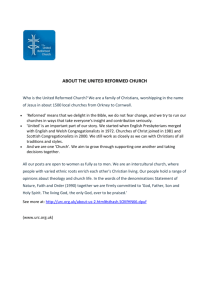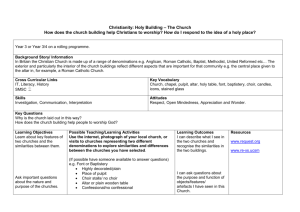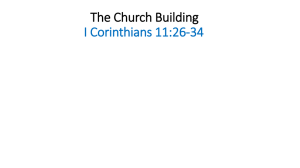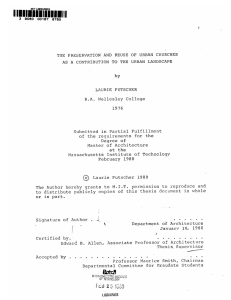UNITED REFORMED CHURCH - The Heritage Alliance
advertisement
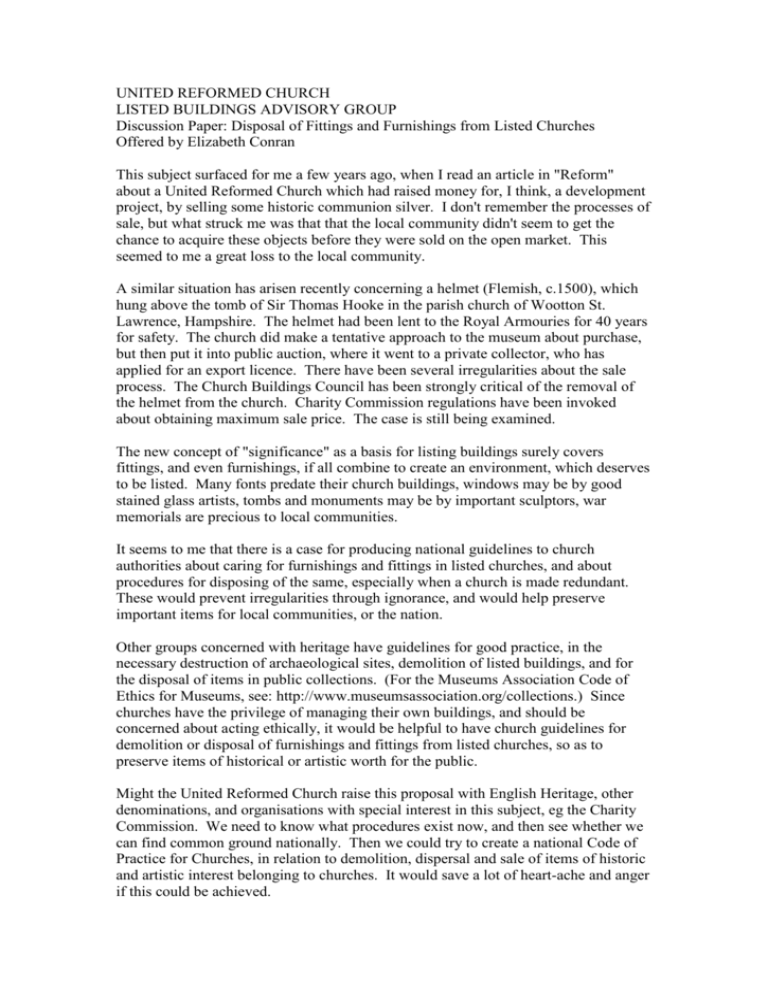
UNITED REFORMED CHURCH LISTED BUILDINGS ADVISORY GROUP Discussion Paper: Disposal of Fittings and Furnishings from Listed Churches Offered by Elizabeth Conran This subject surfaced for me a few years ago, when I read an article in "Reform" about a United Reformed Church which had raised money for, I think, a development project, by selling some historic communion silver. I don't remember the processes of sale, but what struck me was that that the local community didn't seem to get the chance to acquire these objects before they were sold on the open market. This seemed to me a great loss to the local community. A similar situation has arisen recently concerning a helmet (Flemish, c.1500), which hung above the tomb of Sir Thomas Hooke in the parish church of Wootton St. Lawrence, Hampshire. The helmet had been lent to the Royal Armouries for 40 years for safety. The church did make a tentative approach to the museum about purchase, but then put it into public auction, where it went to a private collector, who has applied for an export licence. There have been several irregularities about the sale process. The Church Buildings Council has been strongly critical of the removal of the helmet from the church. Charity Commission regulations have been invoked about obtaining maximum sale price. The case is still being examined. The new concept of "significance" as a basis for listing buildings surely covers fittings, and even furnishings, if all combine to create an environment, which deserves to be listed. Many fonts predate their church buildings, windows may be by good stained glass artists, tombs and monuments may be by important sculptors, war memorials are precious to local communities. It seems to me that there is a case for producing national guidelines to church authorities about caring for furnishings and fittings in listed churches, and about procedures for disposing of the same, especially when a church is made redundant. These would prevent irregularities through ignorance, and would help preserve important items for local communities, or the nation. Other groups concerned with heritage have guidelines for good practice, in the necessary destruction of archaeological sites, demolition of listed buildings, and for the disposal of items in public collections. (For the Museums Association Code of Ethics for Museums, see: http://www.museumsassociation.org/collections.) Since churches have the privilege of managing their own buildings, and should be concerned about acting ethically, it would be helpful to have church guidelines for demolition or disposal of furnishings and fittings from listed churches, so as to preserve items of historical or artistic worth for the public. Might the United Reformed Church raise this proposal with English Heritage, other denominations, and organisations with special interest in this subject, eg the Charity Commission. We need to know what procedures exist now, and then see whether we can find common ground nationally. Then we could try to create a national Code of Practice for Churches, in relation to demolition, dispersal and sale of items of historic and artistic interest belonging to churches. It would save a lot of heart-ache and anger if this could be achieved.
